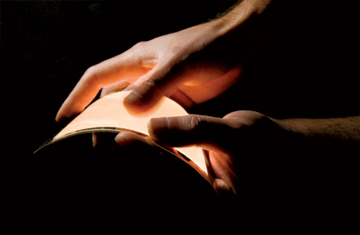It wasn’t long ago that Philips was throwing its weight behind the OLED movement, hailing the technology for having an “unbelievable future.” Those words appear a little less prophetic now, as it seems Philips has lost belief. According to a company spokesperson, the lighting giant has announced the decision to sell their OLED operations.
“In line with our strategic direction, we announced our intention to divest our OLED activity to focus our business and resources on LED based connected systems and services,” the spokesperson said. “With this measure we will be able to focus our resources and be better positioned to capitalize on the fundamental changes taking place in the lighting industry, where value is shifting from individual products to systems and services.”
Philips has remained stoic about its decision to get rid of the OLED lighting development department. The announcement was made quietly to employees late January. It is believed the decision was made as part of Philips’ effort to revitalize and find new leadership for their struggling lighting division. The department has had trouble financially as they shift from traditional lighting such as incandescents to more modern lighting such as LEDs.
“The LED market is attractive: sizeable and growing,” a Philips spokesperson said. “LED lighting allows for new applications and experiences, and promises to become a dominant/important part of the Internet of Things…OLED is a different form of solid state lighting, with specific attributes that are valuable in specific, niche, applications. Compared to the overall SSL market the niche will be small, while it may develop to a reasonable size in absolute terms.”
OLEDs, organic light emitting diodes, were meant to be the next generation of lighting, replacing even the relatively new LED. Flexible patches of material that emit light, OLEDs can theoretically be integrated into the fabric of everything from furniture and clothing to buildings. Successful development of the technology could potentially liberate lighting from the bulb form factor.
However, developers have not been able to match LED efficiency, lower production costs or make OLEDs larger than a few square inches. Philips has clearly had enough of trying to advance the technology beyond it’s current “specialty” status. Rather, they will be focusing their efforts on the future of LEDs.
Deviating from their traditional “replacement bulb” business model, Philips will concentrate on the development of lighting services that take advantage of the digital nature of LEDs. Digital connectivity allows lighting to be controlled remotely in all settings: home, work, roadways and public municipalities. LEDs can be tied into data networks, part of an industry movement toward “smart lighting” and the “Internet of Things”. Intelligent lighting systems can be controlled remotely by people or sensors and can be used to transmit information about traffic, emergencies or even air quality.
Development in OLED technology is still ongoing. South Korea’s LG Chem recently unveiled an OLED that measures a little over a square foot, though they remain well behind their efficient goals. Meanwhile, LEDs continue to improve by leaps and bounds in efficiency, color rendering and now affordability.



